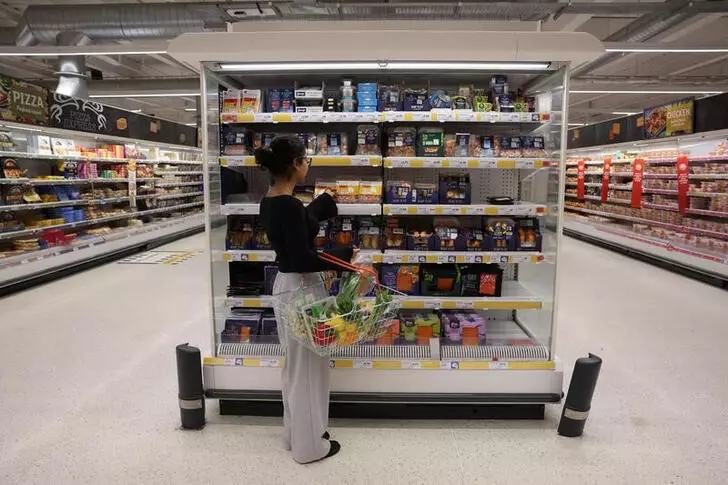In April, Britain experienced a decrease in inflation that was less significant than anticipated by both the Bank of England and economists. Despite forecasts for a drop to 2.1%, consumer prices only decreased to an annual 2.3%, down from 3.2% in March. This unexpected trend had a ripple effect on various sectors, prompting investors to adjust their expectations regarding a potential rate cut in the upcoming month. The slight decline in inflation could have had political ramifications, particularly for Prime Minister Rishi Sunak, who was hoping for positive economic indicators before an impending election.
Following the release of the inflation data, investors reacted by revising their predictions for a rate cut by the Bank of England in June. Initially set at 50%, the likelihood of a rate cut dropped to 18%, signalling a shift in market sentiment. While the decrease in inflation was less dramatic than expected, core measures such as services inflation remained relatively high. This disparity between projections and actual figures complicated the decision-making process for the Bank of England, making it challenging to assess the underlying inflationary pressures accurately.
The latest inflation data highlighted the persistent challenges associated with managing price pressures in the economy. Services inflation, which serves as a crucial indicator for internally generated price trends, remained elevated at 5.9%, surpassing the forecasted rate of 5.5%. Similarly, core inflation, which excludes certain volatile factors, only marginally decreased to 3.9% from 4.2% in the previous month. These trends underscored the ongoing struggle to contain inflation while ensuring sustainable economic growth.
For Prime Minister Rishi Sunak, the unexpected inflation rates presented both opportunities and challenges. While Sunak attempted to leverage the decline in inflation as a positive milestone for the economy, the reality of higher-than-expected services inflation and public borrowing cast doubts on his government’s ability to deliver on promises such as tax cuts. As Sunak and his Finance Minister, Jeremy Hunt, navigate through the economic landscape, the implications of inflation rates on public perception and voter sentiment become increasingly critical.
Despite Britain’s lower inflation rate compared to countries such as the United States, Canada, France, and Germany, the nation still grapples with concerns regarding its economic performance. Since 2020, consumer prices in Britain have risen by more than 22%, reflecting a challenging environment for both policymakers and the general population. As global economic trends continue to evolve, Britain’s inflation record stands out as a key indicator of its economic resilience and competitiveness within the Western European context.
The unexpected inflation rates in Britain have significant implications for economic policies, political strategies, and public perceptions. As policymakers and investors recalibrate their expectations and strategies in response to evolving economic data, the need for a comprehensive and dynamic approach to managing inflationary pressures becomes increasingly apparent. By analyzing the latest inflation trends and their broader impact on the economy, stakeholders can make informed decisions that foster sustainable growth and stability in the long run.


Leave a Reply